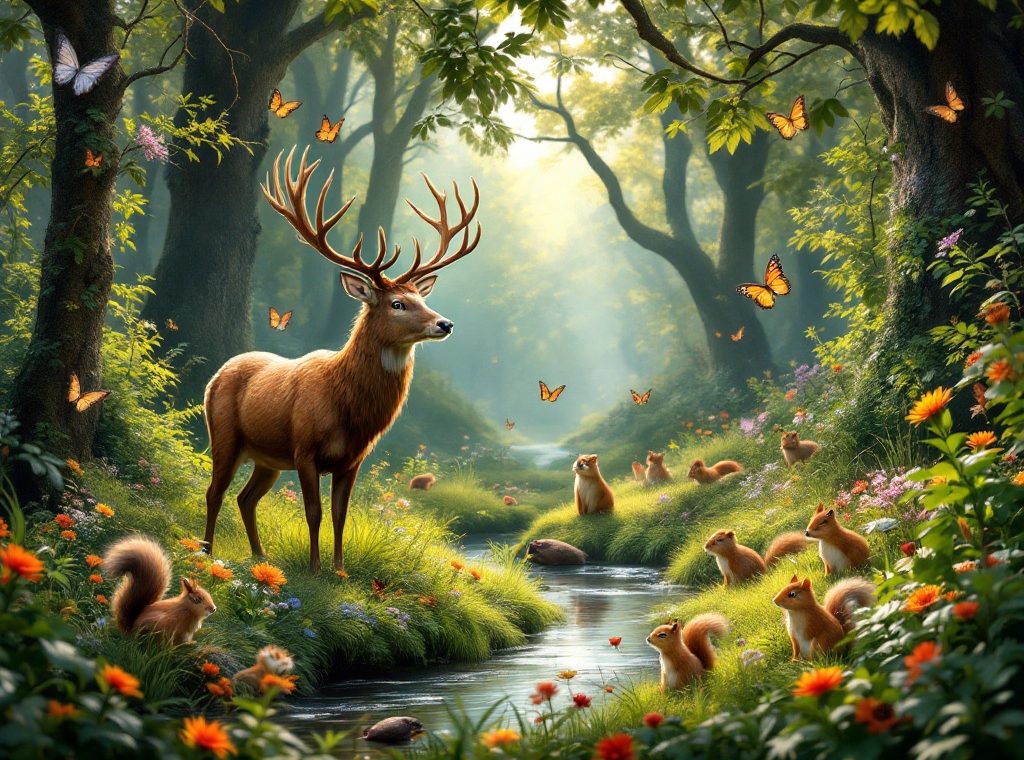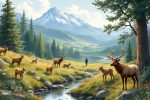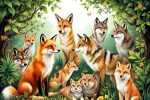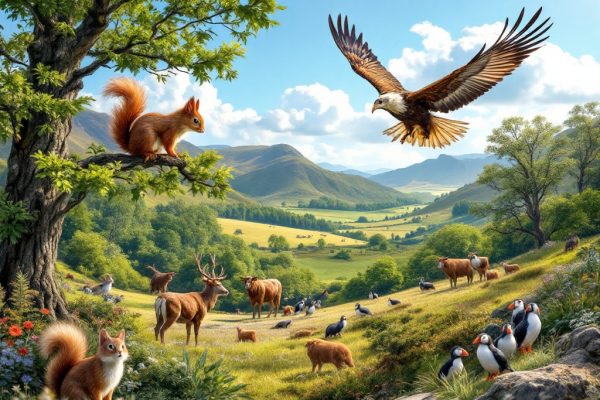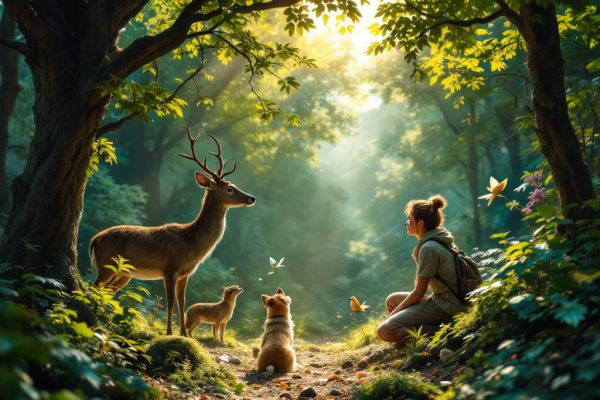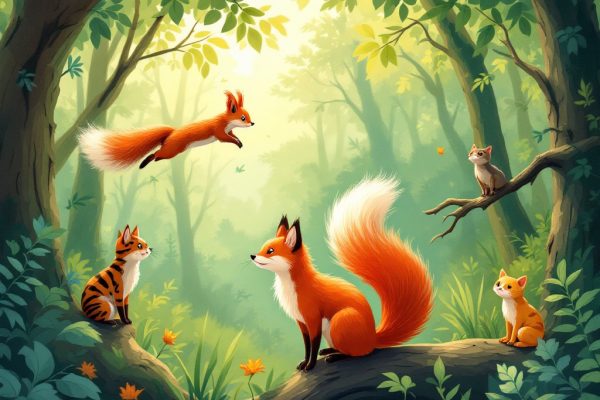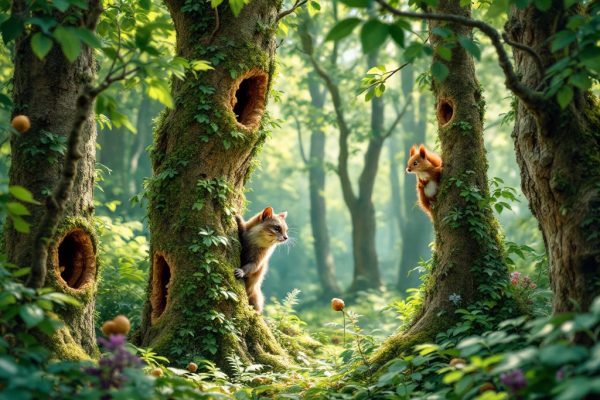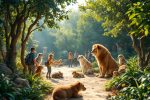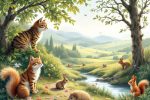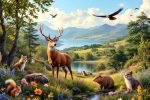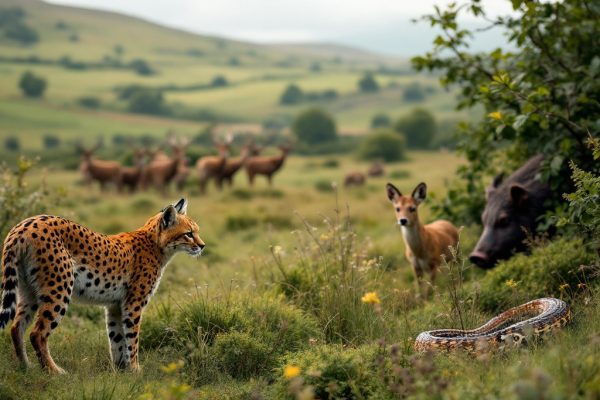What Wild Animals You Can Meet in the Lothian Forests?
Discover the remarkable biodiversity of Lothian Forests! From the majestic red deer, Britain’s largest land mammal, to the elusive Scottish wildcat, these forests teem with life. Explore a haven for rare species like the capercaillie and ptarmigan, alongside playful red squirrels and industrious beavers. Witness the vibrant insect world, including comma butterflies and burnet moths, adding to the rich tapestry of Lothian’s natural heritage. Delve into this article to learn more about these fascinating creatures and their vital roles in this thriving ecosystem.
Important information
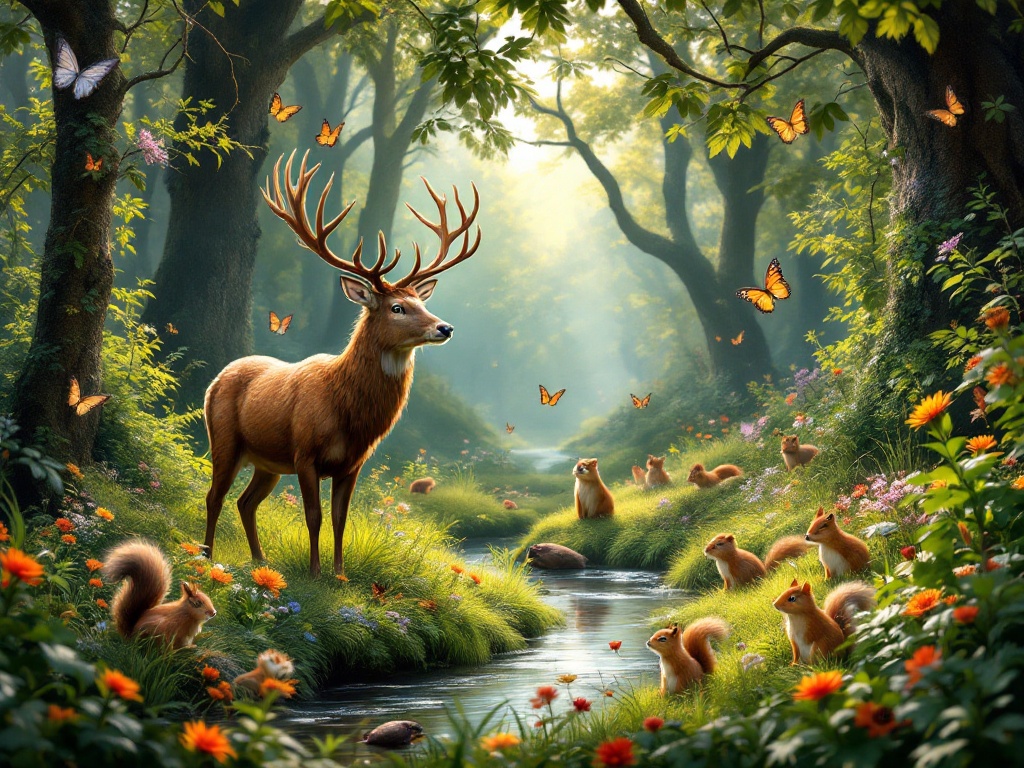
- Lothian Forests support a diverse range of mammals, including red deer (Britain’s largest land mammal), the critically endangered Scottish wildcat, mountain hares, and beavers.
- The forests provide vital habitats for various birds of prey, such as golden eagles, ospreys, and red kites, and offer safe nesting sites crucial for raising their young.
- Ospreys migrate from Africa to Lothian Forests each summer to breed, enriching the biodiversity.
- The capercaillie (world’s largest grouse) and ptarmigan reside in the forests, serving as indicators of a healthy ecosystem, though their populations face threats from habitat loss and climate change.
- The adder, Scotland’s only venomous snake, along with the slow worm (a legless lizard), and amphibians such as the great crested newt, also inhabit Lothian Forests.
Introduction to Lothian Forests and Their Wildlife
Lothian Forests are home to a wide variety of wildlife. Mammals such as red deer, Scottish wildcats, and red squirrels live among the trees. Mountain hares can be seen in the undergrowth, while beavers build their homes in the water. Overhead, ospreys fly with the rare Scottish capercaillie and ptarmigan.
But the forests’ inhabitants are not limited to mammals and birds. Reptiles and amphibians, like the European adder and great crested newt, find safe havens in these ecosystems. A vibrant insect world also thrives, with comma butterflies and burnet moths among the leaves, along with dragonflies and other invertebrates.
Lothian Forests truly offer a remarkable biodiversity haven.
- Red deer roam freely, their majestic presence a symbol of the forest’s vitality.
- The elusive Scottish wildcat, a master of stealth, calls these woods its home.
- Playful red squirrels chase each other through the canopy, their vibrant coats a flash of color against the green.
Mammals in the Lothian Forests
Scotland’s Lothian forests are home to a diverse range of mammals. Red deer, Britain’s largest land mammal, roam freely. The critically endangered Scottish wildcat also inhabits these woods. Mountain hares and beavers thrive in this environment, alongside roe deer and brown hares. Foxes, badgers, and otters find refuge in the forest, as do pine martens and various squirrel species, including the native red squirrel.
Red Deer: The Largest Deer in Britain
Red deer, Britain’s largest deer species, play a vital role in the Scottish Highlands ecosystem. These magnificent animals thrive in a variety of habitats, from woodlands and moorlands to open grasslands. Their grazing significantly influences the local plant life and biodiversity. Come autumn, the males undergo a dramatic transformation for the rutting season. They fill the air with their distinctive bellows and clash antlers in fierce battles for dominance.
Scottish Wildcats: Critically Endangered Species
The critically endangered Scottish wildcat is on the brink of extinction, with only 100 to 300 remaining in their natural habitat. Habitat loss and interbreeding with domestic cats are the greatest threats to these elusive felines, Britain’s last native cat species. Once widespread throughout Britain, their range has dwindled, now primarily confined to northern Scotland. Ongoing conservation efforts, including reintroduction projects in areas like the Lothian forests, offer a glimmer of hope for these wildcats, vital to a healthy forest ecosystem.
Red Squirrels: Observing in Wildlife Hides
Red squirrels are essential for healthy forests in Scotland, their presence indicating a flourishing ecosystem. Wildlife hides in Lothian offer a special opportunity to observe these animals in their natural environment.
Mountain Hares in Upland Areas
Scottish mountain hares thrive in upland areas, especially heather moorland. Their fur changes color with the seasons, providing camouflage. In winter, their fur turns white to blend with the snow. In summer, it becomes mottled brown, matching the terrain. They mainly eat heather, sedges, and the bark of young trees. For shelter, they dig shallow depressions in the ground called forms.
Beavers: Conservation and Reintroduction
Beavers, a keystone species, play a crucial role in their environment by transforming landscapes with their dams. These dams create wetlands that support a diverse range of plant and animal life. Scotland’s reintroduction of beavers aims to restore this natural ecosystem engineering, offering numerous benefits. Some of these benefits include improved water quality, flood reduction, and enhanced biodiversity. Ultimately, these industrious creatures are revitalizing Scotland’s waterways.
Birds of Lothian Forests
Lothian’s forests are home to a variety of bird species, both migratory and resident. These birds play a vital role in the forest ecosystem. They disperse seeds, pollinate plants, and control insect populations. The diverse habitats, from thick woodlands to open meadows, support a rich array of birdlife, contributing to a thriving and complex ecosystem.
Birds of Prey: Habitats in Scotland’s Forests
Scottish forests offer vital habitats for various birds of prey, including golden eagles, white-tailed eagles, ospreys, and red kites. These apex predators thrive on abundant prey like squirrels, hares, and other small mammals, indicating a healthy and balanced ecosystem. The diverse landscapes, from open woodlands to dense coniferous forests, provide a unique niche for each raptor species. For example, golden eagles hunt in open areas, while goshawks use dense forests for cover. The forests also offer safe nesting sites, crucial for raising their young. These woodlands are essential for the continued prosperity of these magnificent birds.
Ospreys: Summer Visitors
Every summer, ospreys migrate from Africa to Scotland’s Lothian Forests to breed and raise their young. These impressive fish-eating birds hunt in nearby lochs and rivers, becoming a key component of Lothian’s vibrant biodiversity during the warmer months. Their presence enriches the forest ecosystem, making them a cherished annual sight.
Scottish Capercaillie and Ptarmigan: Forest Residents
Scotland’s forests shelter two remarkable birds: the capercaillie and the ptarmigan. The capercaillie is the world’s largest grouse, thriving amongst ancient Caledonian pines. The ptarmigan, a master of camouflage, changes its plumage to blend seamlessly with the shifting seasons of the mountains and moorlands. These birds are indicators of a healthy forest ecosystem. However, their populations are declining due to habitat loss and climate change. Ongoing conservation efforts prioritize habitat preservation to safeguard their future.
Reptiles and Amphibians in Lothian
Lothian’s forests are home to a diverse range of reptiles and amphibians, playing a vital role in the local biodiversity. Scotland’s only venomous snake, the adder, thrives in these forests, along with the slow worm, a legless lizard that makes a unique contribution to the ecosystem. The damp environment is also ideal for several amphibian species, including the common frog, palmate newt, and the specially protected great crested newt.
European Adders: Scotland’s Only Venomous Snake
Lothian, Scotland, is home to the adder, the country’s only venomous snake. These snakes thrive in a variety of environments, from forests and grasslands to open moorland. Knowing where they live and how they behave is crucial for their protection. Adders aren’t the only legless creatures slithering through Lothian’s forests; slow worms, a type of lizard, also call these woods home. The damp forest floor provides ideal conditions for a flourishing amphibian population, making frogs and newts common sights.
Great Crested Newt: Conservation Efforts
The great crested newt enjoys legal protection in the UK under the Wildlife and Countryside Act 1981. This legislation prohibits any harm to these creatures, including killing, injuring, capturing, or disturbing them. Their habitats, such as ponds and surrounding terrestrial areas, are also protected. Key conservation efforts include creating and restoring ponds, and ensuring suitable land habitats. Despite these protections, threats such as pollution and invasive species remain a concern, prompting ongoing conservation work.
Insects and Butterflies of Lothian
Lothian’s forests are teeming with life, particularly insects. The easily recognizable Comma butterfly, with its jagged wing edges and a wingspan reaching up to 50mm, is a common sight. These butterflies, along with other insects, are an essential food source for birds and animals. Another key resident is the Burnet moth, distinguished by its striking red spots. A variety of other invertebrates, including dragonflies, also flourish within this vibrant ecosystem.
Comma Butterfly and Burnet Moth
Comma butterflies, easily identifiable by their jagged-edged wings, can reach a wingspan of 50mm. Burnet moths, equally distinctive with their vibrant red spots, also inhabit Lothian’s forests, particularly during the summer months.
Dragonflies and Other Invertebrates
Lothian’s wetlands are teeming with a variety of invertebrates, including dragonflies, damselflies, water beetles, and pond skaters. These diverse habitats serve as crucial breeding grounds and provide vital food sources, supporting a rich biodiversity. These invertebrates also contribute significantly to the health and biodiversity of Lothian’s forests. Their presence is a key indicator of a thriving and balanced ecosystem.

